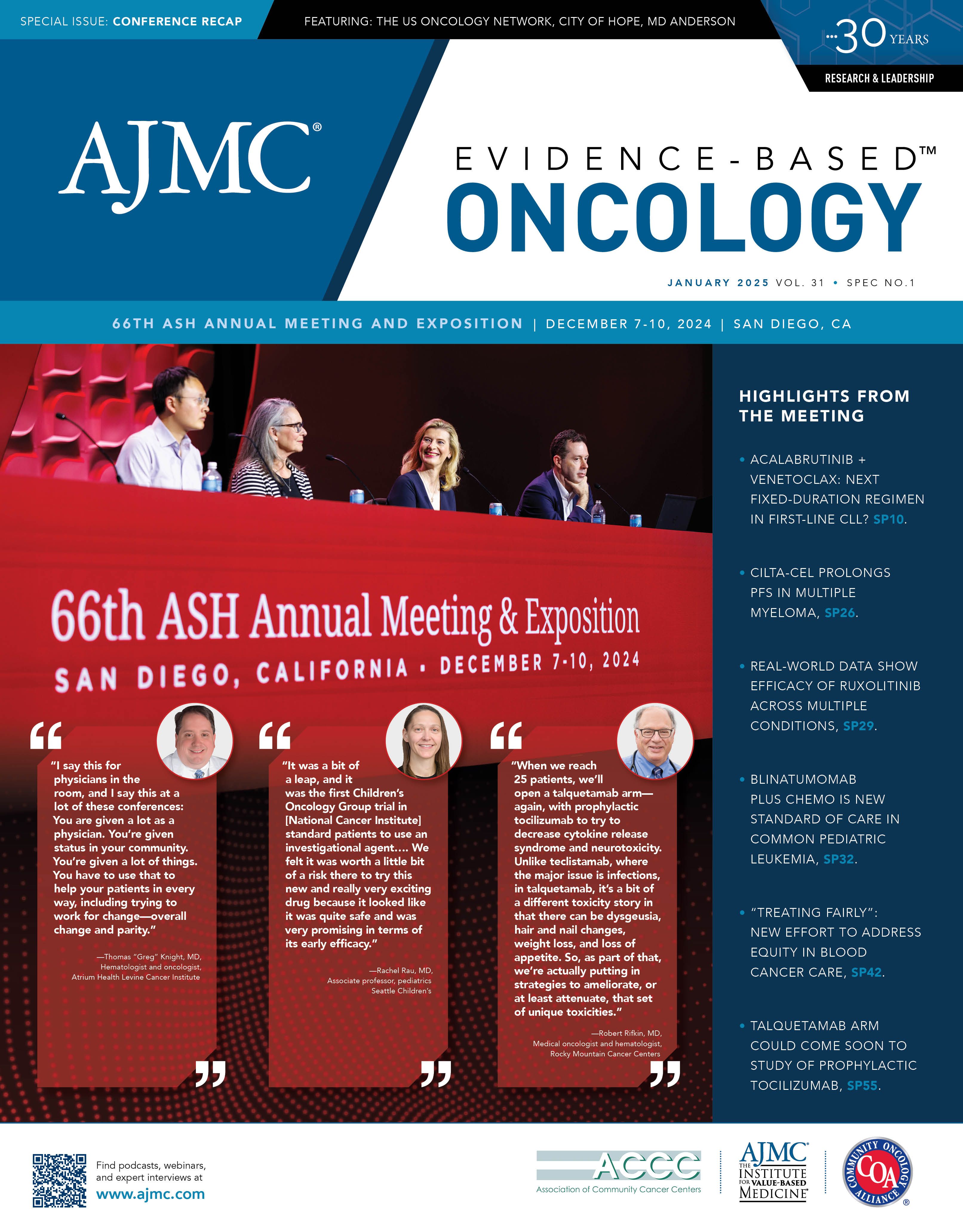Publication
Article
Evidence-Based Oncology
INTERVIEW: Linvoseltamab Shows Durable Efficacy, Manageable Safety in R/R Multiple Myeloma
Author(s):
Key Takeaways
- Linvoseltamab showed a 71% overall survival rate and 52% complete response rate in relapsed, refractory multiple myeloma patients.
- High-risk subgroups, including penta-refractory patients, demonstrated favorable response rates and durations of response.
In follow-up results to the phase 1/2 LINKER-MM1 study (NCT03761108) presented at the 66th American Society of Hematology Annual Meeting and Exposition, cytokine release syndrome (CRS) occurred in 46% of patients taking linvoseltamab, but this resolved within 14.7 hours. Mansi Shah, MD, an assistant professor at Rutgers Cancer Institute of New Jersey, told The American Journal of Managed Care (AJMC) that these results highlighted the predictability and lower rates of CRS compared with other bispecific antibodies.
AJMC: Can you give a brief overview of the study?
Shah: Linvoseltamab is a BCMA [B-cell maturation antigen] and CD3 bispecific antibody that was studied in patients with relapsed, refractory multiple myeloma, and it was evaluated in patients who had received 3 or more prior lines of therapy and were triple-class exposed or triple-class refractory. It was looking at the overall response rate in terms of the primary outcomes and the secondary outcomes, [which] were safety, duration of response, progression-free survival [PFS], minimal residual disease, and overall survival. This was a longer follow-up for the study that was previously presented. At 21.3 months median follow-up, linvoseltamab showed an overall survival of 71% in all comers, with 52% of patients achieving a complete response or better. The median duration of response was 29 months, the median PFS was not reached, and the median overall survival was 31 months, which is pretty significant.
This study also evaluated high-risk subgroups. In patients who are penta-refractory, the overall response rate was 68%, with 41% achieving a complete response or better. The median duration of response in this population was also 29 months, with the median PFS not reached. They also evaluated predesignated high-risk subgroups like bone marrow plasma cells greater than 50%, as well as soluble BCMA levels greater than or equal to 400. In these subgroups, the overall response rate in patients who had greater than 50% bone marrow plasma cells was about 50%, with 39% of patients achieving a complete response or better. The median duration of response was slightly lower at 19 months, the median PFS was about 17 months, and [in] the patients who had a soluble BCMA level greater than 400, the overall response rate was 56%, with 40% of patients achieving a complete response or better. The median duration of response was 29 months, and the progression-free survival was 16 months in these patients.
AJMC: Can you discuss the main implications of the findings?
Shah: In terms of the patient characteristics, the median overall age was about 70 [years], and about 14% of patients had extramedullary plasmacytomas. In terms of safety, there were about 75% of patients with all-grade infections and about 46% of patients who had CRS, which is lower than [for] the commercially available bispecific antibodies. Importantly, in terms of the infections, which occurred in 75% of patients, grade 3 or 4 infections were in 37% of patients, approximately. However, [infections] decreased over time because the study prospectively studied decreased frequency of linvoseltamab administration. After the step of dosing, the initial dosing was weekly, followed by every-2-week dosing for weeks 14 to 23. Starting with week 24, the patients who had achieved a VGPR [very good partial response] or better went to every-4-week dosing. We can see this impacting infections, where with decreased frequency of linvoseltamab dosing, the rates of infections decrease significantly.
Reference
Shah MR, Richter J, Lee HC, et al. Linvoseltamab in patients with relapsed/refractory multiple myeloma: longer follow-up and selected high-risk subgroup analyses of the LINKER-MM1 study. Presented at: 66th American Society of Hematology Annual Meeting and Exposition, December 7-10, 2024; San Diego, CA. Abstract 3369.






